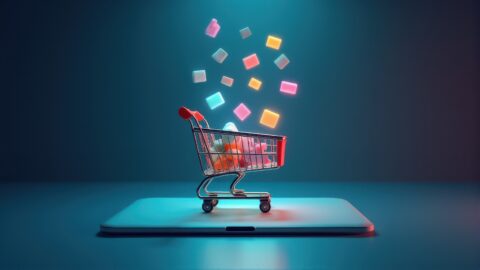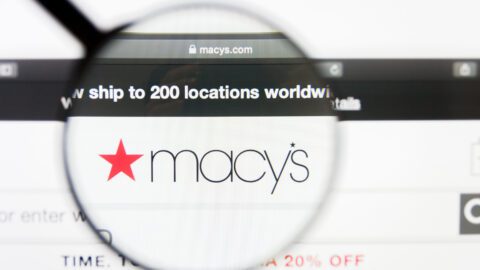While as many as 77% of retailers say they have an established process to identify their most loyal customers, only 13% say they can accurately identify those that are most profitable, according to the BRP 2018 Customer Loyalty Special Report. Up to 39% of retailersdo have processes in place to identify profitable customers, but admit that their efforts still need improvement. Another 27% project that they will be able to identify these shoppers within three years.
Retailers that want to maximize customer profitability as well as loyalty are leveraging personalization efforts across a number of different areas:
- 53% of retailers extend specialized offers to encourage customers to identify themselves with personal information, while 34% entice others with product incentives;
- 40% leverage brand advocacy, although only 8% say they use it effectively; and
- 69% of retailers send out invitations to special events.
Improving personalization capabilities means rethinking how retailers analyze customer data and identify their top consumers, according to Perry Kramer, SVP and Practice Lead at BRP. Private label sales will play a major part.
“Quite often, retailers are going after shopping frequency, recency or dollars spent,” Kramer said in an interview with Retail TouchPoints. “But they’re really missing the mark in identifying that 13%. That’s really the secret, because that personalization overlaps with the trend of private label. If you’re a retailer and you’re chasing that customer that comes in most often, but they’re always coming in with coupons and they’re only buying brand things and not buying private label, then you’re missing out on higher profit margins.
“Identifying these consumers is still a very immature area,” Kramer added. “Management pushes for quick results and they’ll often do the analytics on the easy things, such as frequency and total spend, and never really take the time to peel back the onion and say, ‘Is what they’re buying actually profitable for us?’”
Leveraging loyal shoppers’ brand advocacy is an even bigger challenge for retailers: only 8% say they use it effectively. But a total of 40% are able to leverage brand advocacy on some level, well ahead of the 28% that did so in 2017.
“Those most profitable customers are usually the ones that also are your brand advocates,” said Kramer. “They’re the ones saying they had a great experience at the store today, they loved the product and said it is great quality. That’s going to drive more shoppers into your store. Brand advocacy is a big factor that can be driven by personalization, and when you overlay that with social media, you’ve got a winning combination.”
Another challenge for retailers is lookalike products and price matching capabilities among competitors. These factors mean retailers need to leverage personalized experiences to build relationships with their most valuable shoppers going forward.
“It used to be you were competing with retailers that had like-for-like products,” said Kramer. “Now you’re competing with like-for-like products, price-for-price products and experience-for-experience. If you walk into the Apple store and you have this great experience, and then you walk down the mall and you buy a handbag, you’re going to have a different expectation of experience.”
As Retailers Gather More Shopper Data, Mobile Becomes Bigger Factor
Among the retailers that can identify their most valuable customers, 53% are capable of sharing this personal information with their associates. Retailers that identify customers when they enter the store and equip their associates with the proper mobile tools can personalize the shopping experience based on customer context.
“Mobile is going to become the default way of identifying the customer in the near future,” Kramer said. “You’re not going to ask them for their emails, you’ll be able to pick up an NFC signal off their phone, scan a barcode, and you’ll have their email linked on the backend through e-Commerce sales.”
53% Of Retailers Extend Specialized Offers To Garner Personal Info
The first step for any retailer on a path to personalization is identifying the customer early in their shopper journey. Presently, 53% of retailers extend specialized offers to encourage customers to identify themselves with personal information, well ahead of the 40% that did so last year.
“Part of that is definitely a generational change,” Kramer said. “How our parents define data privacy is not how our kids define data privacy. The next generation is much more comfortable giving up some information — their phone number, their emails — in exchange for some kind of reward. If they give it to you once and you don’t do anything, then maybe they’ll give it to you a second time. But if you don’t give them a personalized offer, a personalized service in the store or special loyalty points, they’re not going to give it to you anymore. They’re just going to shop somewhere else.”
Personalization Incentive Opportunity: Streamlined Returns
While extending specialized offers is by far the preferred method for retailers seeking to incentivize consumers, merchants also entice shoppers with:
- Product incentives (34%);
- Maintenance of purchase history for ease of returns/exchanges (32%);
- More personalized service (32%); and
- Credit towards future purchases (29%).
Still, 18% say they don’t incentivize shoppers at all, with 16% saying they can’t identify consumers. Retailers are still underutilizing many of these capabilities, and they must continue improving on their incentive offers if they want to personalize the customer experience.
“It varies by segment — in luxury, personalized service is an absolute expectation,” Kramer said. “You go into a high-end shoe store or handbag store, they’re expecting you to know what they’ve bought in the past. You should know what kind of colors, shades and other personalized features customers like.
“In other areas, it’s definitely a focus around ease of returns and exchanges, especially when you combine that with online,” Kramer added. “I’m surprised we’re only at 32% adoption in both those categories. You really need to make it seamless, whether you buy a product online and return it in a store or vice versa. That’s an important area to getting the customer to think ‘channel-less.’ You don’t want the customer to think it is going to be easier or more difficult to buy in either channel.”
Special Events Beat Out Personalized Promotions, Rewards For Top Experiences
When seeking to enhance the customer experience, most retailers put their faith in live events. In fact, 69% of retailers send out invitations to special events. Additionally, merchants also offer:
- Personalized promotions (56%);
- Personalized rewards (50%);
- Preferred/first access to new products (25%); and
- A personal shopper (19%).













